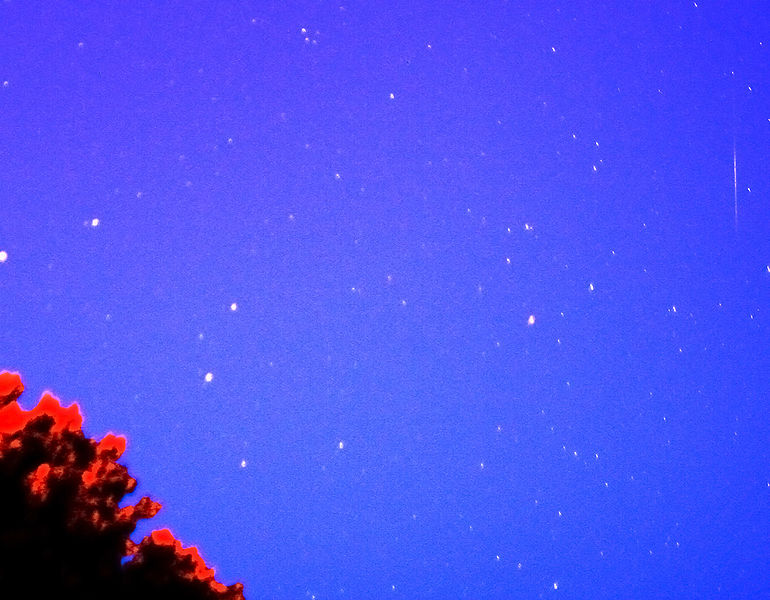Please note: Osher Rainforest will be closed for maintenance May 7-9.
Science News
Heard of Quadrantid Meteors?
January 3, 2011

By Bing Quock
The New Year begins with one of the better annual meteor showers, and this year, its peak coincides with a new moon, providing excellent viewing prospects (if weather permits, as always).
On the night of January 3rd (and through the early morning hours of the 4th), the Quadrantid meteor shower reaches its peak. This happens when Earth sweeps through the dusty trail of a comet that has passed through the inner solar system: as the dust particles zip through our atmosphere, they burn up, causing brief streaks of light known as meteors.
This shower gets its name from the now-defunct constellation Quadrans Muralis, or the Wall Quadrant, before it got booted from Boötes. (The astronomer Jérôme Lalande hoped it would catch on, but no luck.) The less-than impressive ex-constellation formerly occupied a space now given over to the northern portion of Boötes the Herdsman.
Never heard of the Quadrantids? You’re not alone. Like the more spectacular Geminid shower of December, the Quadrantids are rated as a very good shower, but most folks in the Northern Hemisphere don’t take much notice. Why? Because the Quadrantids take place during the wintertime, when most people usually have something more reasonable to do than spending a cold night standing outside, gazing up at the sky. For some reason, most people prefer staying up all night for the Perseid meteor shower, which takes place in early August. Go figure.
The Quadrantid shower typically produces about 40 meteors per hour, but it often distinguishes itself with infrequent displays of hundreds of meteors during a very sharp, narrow peak, so the exact time of the peak will determine what part of Earth’s surface has the best viewing prospects. This year’s forecasted peak is expected to occur sometime between 1:00 and 10:00 pm PST on the 3rd, which doesn’t particularly favor U.S. observers, since the best time to look for a meteor shower occurs after midnight. That’s when sky-watchers are actually looking in the direction Earth is moving through the comet’s dust stream, but if the weather is clear, take a look anyway. On any clear night, 4-6 sporadic meteors can be seen per hour, but the moonless sky on the night of the 3rd offers the best chance of seeing any of the Quadrantids.
Bing Quock is the assistant director of the Morrison Planetarium.
Image by Mila Zinkova/Wikimedia